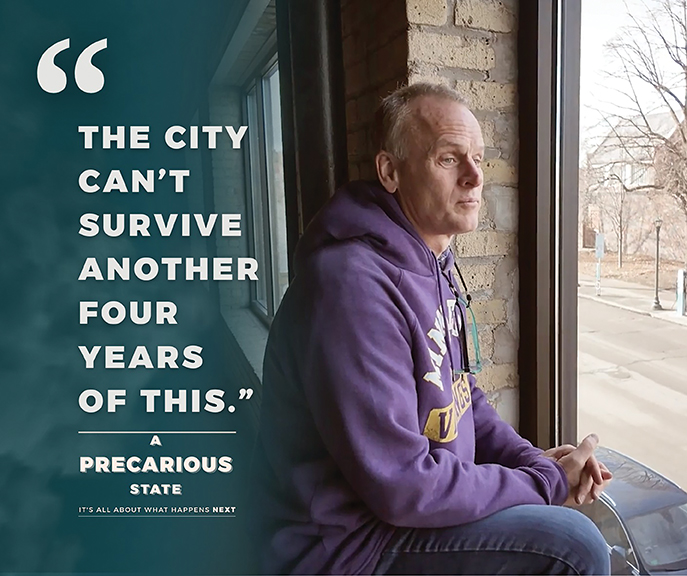“Progressive blowout.” That seems the only reasonable phrase to describe the results of August’s primary elections for the 61A seat in the Minnesota House and the Fifth District seat in Congress.
In a three-way race for the 61A seat, Katie Jones secured a healthy plurality of the vote (43%) to defeat fellow contenders Will Stancil (36.5%) and Isabel Rolfes (20.5%).
In the Fifth District race, after prevailing by only 2% in 2022, incumbent Ilhan Omar defeated her second-time challenger Don Samuels by more than 13%, garnering 56% of the vote to Samuels’ 43%. In both instances, outspoken DFL progressives defeated more moderate challengers by large margins.
The winners in both contests will go on to face challengers in the November general election, but the area’s historical voting patterns suggest that they head into those races with overwhelming advantages.
Perhaps predictably, voter turnout was abysmal, with only 35% of registered voters casting a ballot in the 61A race, and a mere 29% of citywide voters casting a ballot in the Omar/Samuels contest.
Nonetheless, the election will likely prove highly consequential for three reasons: (1) it sets up both winners for periods of comfortable incumbency in future elections; (2) it suggests a significant shift in the area’s political leanings; and (3) it highlights some important emerging areas of voting power.
The numbers for the 61A race underscore these latter two points. Vying to replace the retiring Frank Hornstein after 20 years, all three candidates identified as DFL progressives, but within that broad labeling, Stancil positioned himself closest to the traditional political center, while Jones and Rolfes staked out positions further to his left. Voters rewarded the left.
Out of thirteen precincts in the district, Stancil defeated Jones in only one: Kenwood and West Lowry Hill (W7, P2), where he secured 65% of the vote, compared to 26% for Jones and 9% for Rolfes. There were five other precincts in which Jones and Stancil were separated by very narrow margins, all of which Jones carried: East Isles (W7, P9), 1 vote; Lowry Hill main (W7, P3), 2 votes; Loring Park (W7, P5), 4 votes; south Bryn Mawr (W7, P7), 9 votes; and CIDNA (W7, P4), 12 votes.
In all the other precincts, Jones defeated Stancil and Rolfes by larger margins; her top three precincts being Near North (W5, P9) and northern Bryn Mawr (W7, P1), where she won 52% of the vote in each, along with the Wedge (W10, P1), where she received 50%. All in all, these precinct-by-precinct victories gave Jones a comfortable win over Stancil of nearly 7 points.
While that in itself constituted a decisive win for Jones, an interesting hypothetical asks what would have happened if it had been a two-way race without Rolfes. Given Rolfes’ overall left position in the race, it seems reasonable to assume that she attracted mostly left-leaning voters who would have been more likely to gravitate towards Jones than Stancil.
If Rolfes’ 20% of the vote was therefore allocated to Jones, the results in 61A would more closely resemble some of the lopsided blowouts seen in the 2023 city council race, such the 60% victory of Aisha Chughtai in Ward 10.
Election turnout data also tell interesting stories. Overall, the top three precincts by voter participation were (1) Kenwood and west Lowry Hill (54%), (2) north Bryn Mawr (52%), and (3) south Bryn Mawr (48%). The three with the lowest turnout were Near North, at 12%, and the two precincts near Elliot Park (W6, P1 and P2), 18% and 17%, respectively. Jones carried all three of these precincts by substantial margins over Stancil, with Rolfes having some of her stronger showings there as well.
In general, the votes in the lower to moderate turnout precincts skewed heavily toward Jones and Rolfes, suggesting there is a well of untapped voters in these areas who could be reasonably presumed to break for left-leaning progressives if they decided to go to the polls.
That, in turn, paints a picture of the higher turnout precincts immediately surrounding Lake of the Isles and Cedar Lake as being an island of more traditional moderate liberalism surrounded by a sea of emerging left-leaning progressivism (although, to be clear, Jones still won by narrow mar- gins in all but one precinct in that area.).
In the end, it’s hard to disagree with the Twitter assessment of Ward 9 councilmember Jason Chavez, who tweeted out, “Mpls is a progressive city that is ready to move forward.”
One of the biggest winners not on the ballot? Ward 7 progressive councilmember Katie Cashman, who is up for reelection in 2025. While she won her initial race by the narrowest of margins (177 votes), the strong progressive showing in this vote suggests she may cruise to reelection, particularly now that she carries the advantage of incumbency.
In terms of the tenor of the 61A race, it was a civil, issues-based campaign, with each of the three candidates working hard to reach out personally to voters and emphasize the issues they thought important, rather than personally attacking their competitors. However, the race was marred in its closing days by a false attack on Stancil by an outside group, falsely claiming to be “61A neighbors,” suggesting that Stancil was something less than a full-throated supporter of reproductive freedom for women. It’s impossible to know at this stage how or if this group’s mailer and tweets may have impacted the outcome, but it added a gutter feel to an otherwise civil and issues-based contest.






